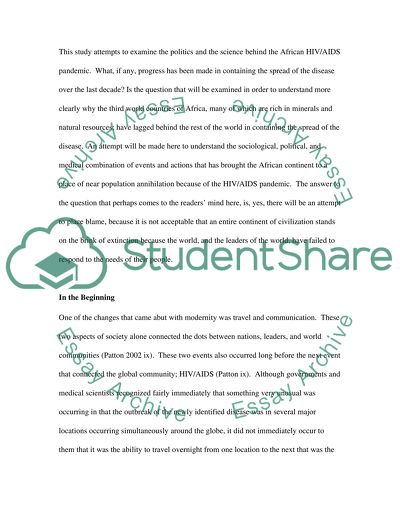Cite this document
(“The Politics of HIV/Aids - To what extent is the HIV/Aids crisis in Essay”, n.d.)
The Politics of HIV/Aids - To what extent is the HIV/Aids crisis in Essay. Retrieved from https://studentshare.org/miscellaneous/1545683-the-politics-of-hivaids-to-what-extent-is-the-hivaids-crisis-in-africa-a-political-rather-than-a-medical-issue
The Politics of HIV/Aids - To what extent is the HIV/Aids crisis in Essay. Retrieved from https://studentshare.org/miscellaneous/1545683-the-politics-of-hivaids-to-what-extent-is-the-hivaids-crisis-in-africa-a-political-rather-than-a-medical-issue
(The Politics of HIV/Aids - To What Extent Is the HIV/Aids Crisis in Essay)
The Politics of HIV/Aids - To What Extent Is the HIV/Aids Crisis in Essay. https://studentshare.org/miscellaneous/1545683-the-politics-of-hivaids-to-what-extent-is-the-hivaids-crisis-in-africa-a-political-rather-than-a-medical-issue.
The Politics of HIV/Aids - To What Extent Is the HIV/Aids Crisis in Essay. https://studentshare.org/miscellaneous/1545683-the-politics-of-hivaids-to-what-extent-is-the-hivaids-crisis-in-africa-a-political-rather-than-a-medical-issue.
“The Politics of HIV/Aids - To What Extent Is the HIV/Aids Crisis in Essay”, n.d. https://studentshare.org/miscellaneous/1545683-the-politics-of-hivaids-to-what-extent-is-the-hivaids-crisis-in-africa-a-political-rather-than-a-medical-issue.


